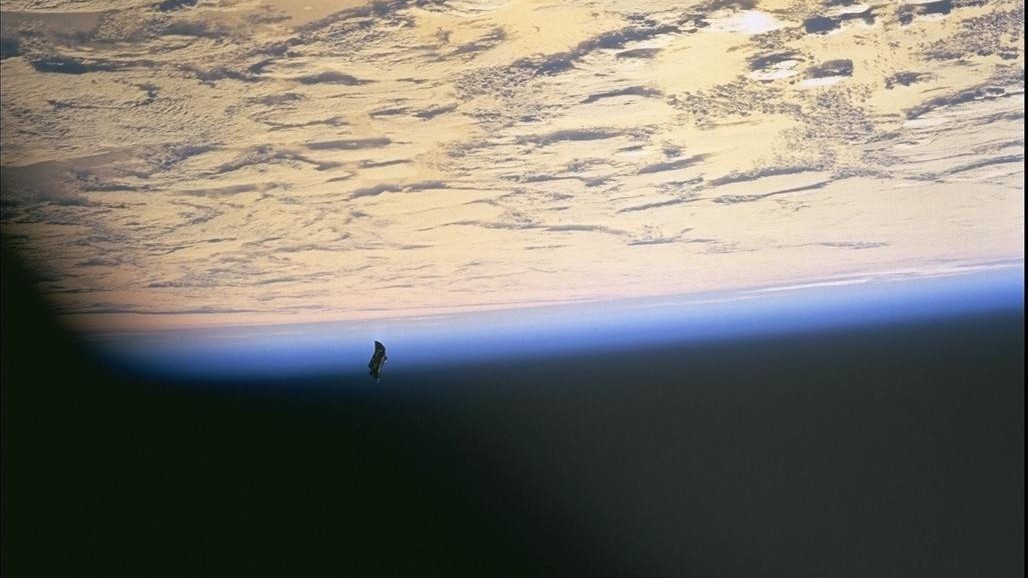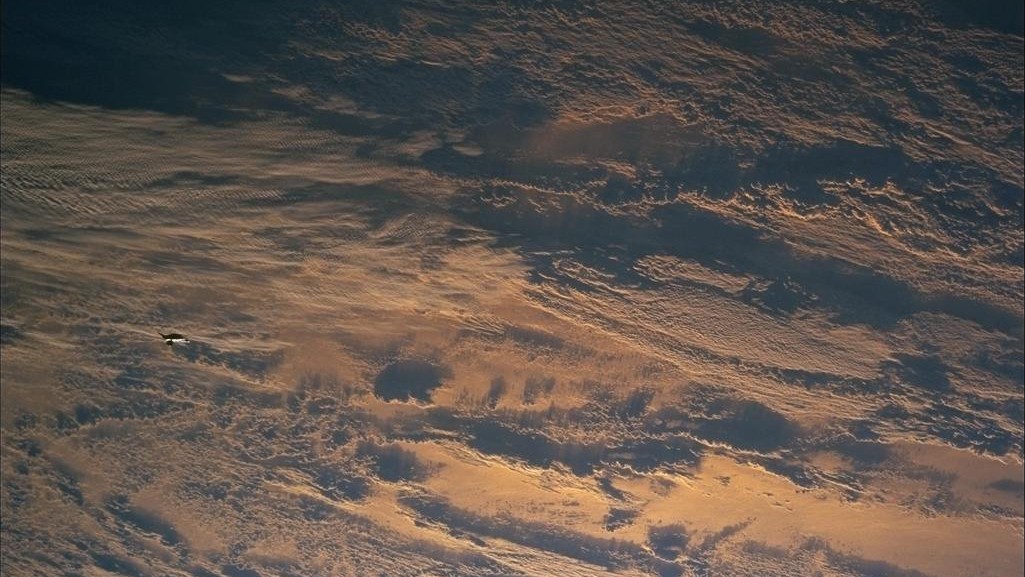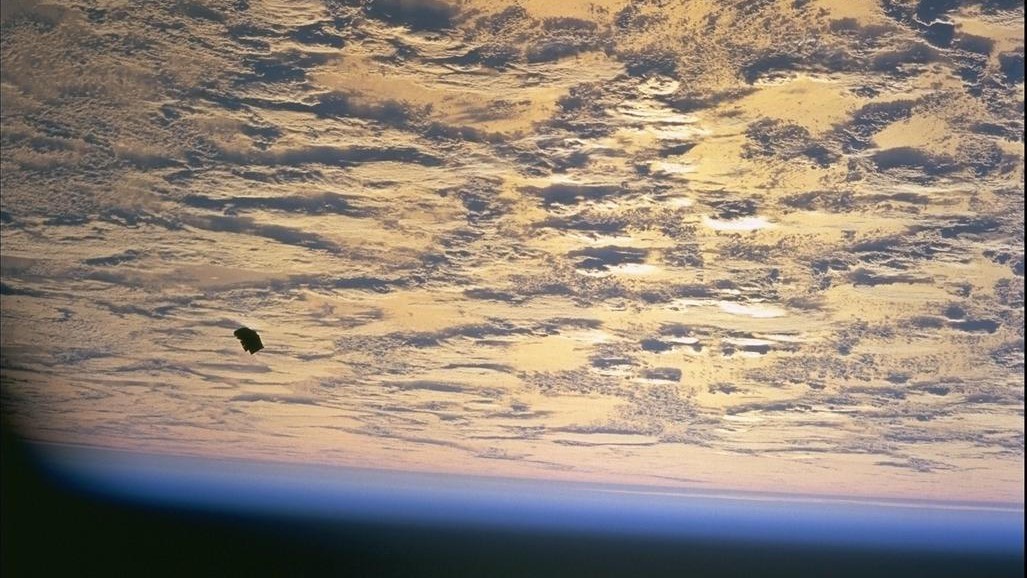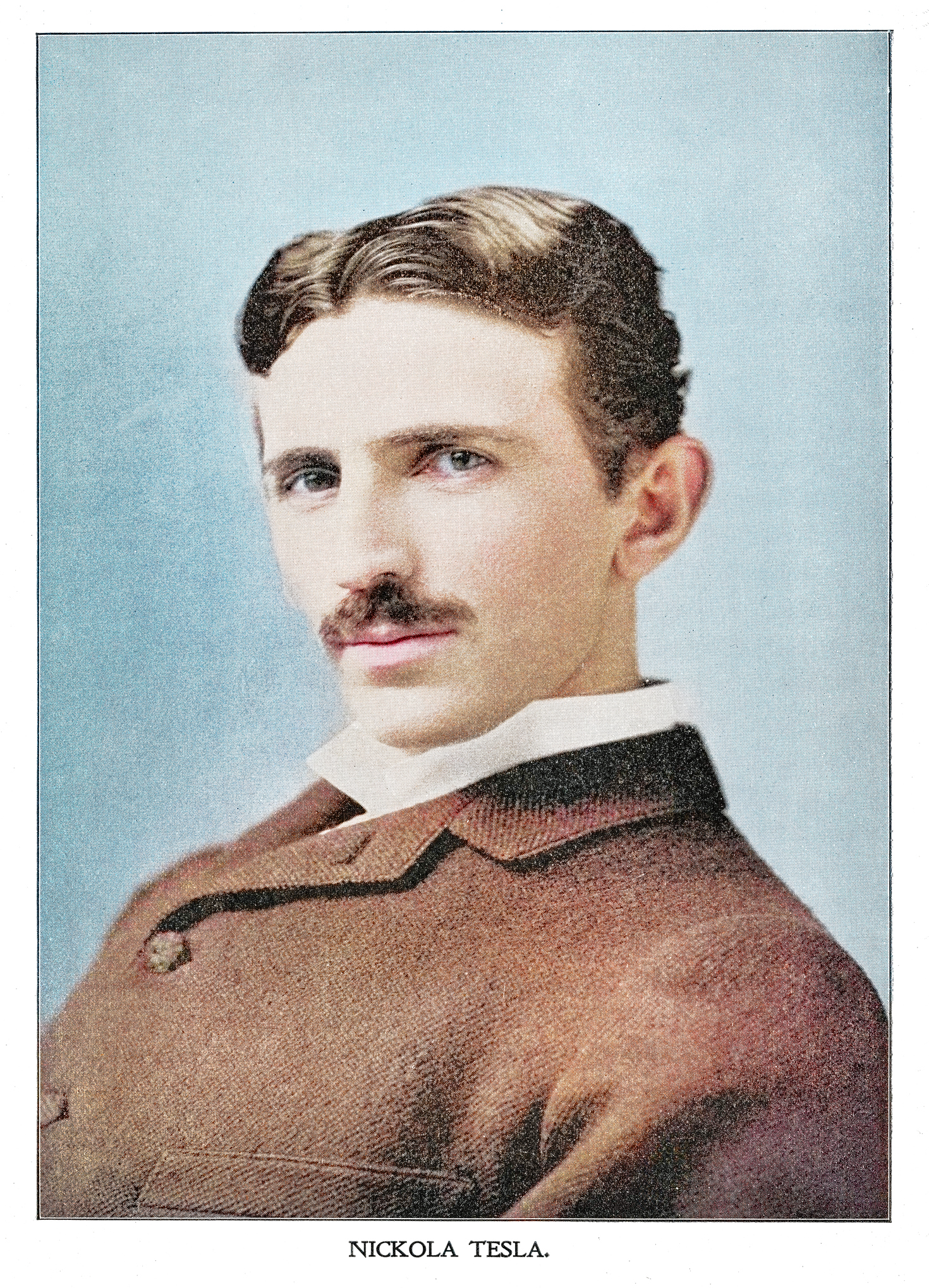The 'Black Knight' satellite: A 120-year-old conspiracy theory
According to conspiracy theorists, the Black Knight satellite is an alien spacecraft orbiting Earth. Here's what's really going on.

The Black Knight satellite conspiracy theory claims that a mysterious, artificial object is orbiting Earth in near-polar orbit, possibly of alien origin, and has been doing so for more than 13,000 years.
While scientists and space agencies have debunked the claim many times the Black Knight satellite myth persists in online forums and tabloid articles, fuelled by a jumble of unrelated space phenomena, misidentified objects and speculative science fiction.
Let's unravel the myth, where it came from and why the Black Knight satellite continues to fascinate.
UFOs and UAP: History, sightings and mysteries
What is the Black Knight satellite?
In 1998, the crew of space shuttle mission STS-88 took a series of photographs showing a dark, twisted object orbiting Earth. UFO enthusiasts quickly claimed the object was the fabled Black Knight satellite. However, NASA and the astronauts involved offered a more down-to-earth explanation.
According to astronaut Jerry Ross, the object was a thermal blanket lost during a spacewalk to install insulation on the International Space Station module. "Jerry, one of the thermal covers got away from you," STS-88 commander Robert Cabana told Ross during the spacewalk, and it soon became apparent that the cover was lost for good.
The object was later catalogued by NASA (catalog number 025570) and burned up in Earth's atmosphere a few days later.
Much of this information has been placed on the record. Former NASA engineer James Oberg, who personally knows Ross and the person who took the photos, cosmonaut Sergei Krikalev, has demonstrated that these supposed images of the Black Knight actually depict a very mundane object.

So why do some people believe the Black Knight is an ancient alien spacecraft? The answer lies in a century-long mix of stories, stretching back to the early days of radio experiments.
Related: The most extreme human spaceflight records
Black Knight satellite frequently asked questions
Is the Black Knight satellite real?
The Black Knight satellite is a lost thermal blanket from a 1998 space mission. Though the conspiracy theory lives on.
Did Nikola Tesla detect signals from the Black Knight satellite?
Tesla detected unusual radio signals, but scientists believe they were natural or from Earth-based sources, not from a satellite.

Origins of the Black Knight satellite conspiracy
The Black Knight satellite myth is a patchwork of different events spanning more than a century. Believers often point to Nikola Tesla's 1899 experiments in Colorado Springs where he reportedly detected repeating radio signals that he believed might have been from extraterrestrial sources.
In 1927, amateur radio operator Jørgen Hals in Norway observed long-delayed radio echoes — signals that returned seconds after transmission. This phenomenon, which remains not fully explained, added to the growing legend of strange signals from space.
Then in 1954, newspapers published claims by retired U.S. Air Force major Donald Keyhoe that the U.S. Air Force had detected two artificial satellites orbiting Earth — at a time when no nation had yet launched one. These claims have never been substantiated.
Further fuel was added in 1960, when TIME magazine reported that the U.S. Navy detected a "dark object" thought to be a Soviet spy satellite in orbit. It was later identified as a piece of the Discoverer 8 satellite, part of the CORONA program, America's first spy satellite project.
The STS-88 photos that sparked a viral legend





The modern surge in interest in the Black Knight satellite came with the release of images from NASA's STS-88 mission in 1998. The images show a strange, black, wing-like object silhouetted against Earth's blue background. They quickly circulated online and became "evidence" for the Black Knight in UFO communities.
But spaceflight experts say there's a more mundane explanation.
James Oberg, a space historian and former NASA engineer who worked on the STS-88 trajectory design team, says the object was a thermal insulation blanket lost during a spacewalk. He's spoken with the astronauts involved, including cosmonaut Sergei Krikalev, who took the photos.
James Oberg is a space journalist, historian and former NASA engineer who worked on the STS-88 trajectory design team. Oberg personally knows Ross and the person who took the photos, cosmonaut Sergei Krikalev. Oberg frequently addresses supposed UFO sightings, offering scientific interpretations for phenomena that may appear extraterrestrial or debunking them as hoaxes.
Oberg told All About Space: "Every step of the way, there is consistency with what I learned as a lifelong spaceflight operations specialist. Why the blankets were needed, why one of them came loose, why it floated off the way it did."
He added that public misunderstanding was made worse when NASA's website changed, breaking the original links to the photos, which some interpreted as a cover-up.
"They're probably some of the weirdest-looking 70-mm photos to ever come out of the shuttle program," Oberg said. "But all normal journalistic practices — establishing a timeline, asking witnesses, looking for broader context — were skipped."

Why the Black Knight satellite myth persists
Despite expert explanations, the Black Knight satellite theory remains popular among conspiracy theorists. Part of its endurance lies in human psychology — our brains are wired to look for patterns, stories, and hidden meanings.
The theory also fits into a larger cultural interest in aliens, UFOs, and secret space programs. Recent attention to UAPs (unidentified aerial phenomena) and declassified government reports has made the public more open to space-related mysteries, even ones long since debunked.
The myth's ingredients — Tesla, strange signals, lost satellites, and eerie space photos — are irresistible to those looking for signs of alien contact or government secrets.
What scientists say about Tesla's signals

So what happened in 1899? Nikola Tesla began to record some very odd signals, seemingly from outer space. While in his barn-like laboratory in Colorado Springs that year, the genius Serbian-American inventor and electrical engineer noted some unusual radio signals and speculated they had come from an intelligent alien civilization.
That's perhaps the least likely explanation, of course. Over the years, some people have speculated that Tesla may have detected emissions from a pulsar, a superdense, fast-spinning stellar corpse. But that's probably off the mark as well, scientists say.
"The very first source of non-terrestrial radio waves was discovered in the 1930s, and that was from the center of our galaxy, which is the most powerful radio source in the sky at many frequencies," said Varoujan Gorjian, a scientist at NASA's Jet Propulsion Laboratory in Southern California. "It wasn't until the 1960s that the technology evolved to detect the first pulsars. If what Tesla detected was a real signal and not an artifact of his instrument, it most likely came from Earth."
Related: Fermi paradox: Where are the aliens?
A blanket, not a beacon
The legend of the Black Knight satellite is a classic case of mistaken identity — and a reminder of how easily myths can take hold when space, technology, and mystery intersect.
Though believers claim it is an ancient alien spacecraft watching over Earth, the evidence points to a far more ordinary origin: a thermal blanket lost during a 1998 spacewalk, confused with a handful of loosely connected stories spanning a century.
Still, like many conspiracy theories, the Black Knight satellite continues to orbit popular imagination.
Additional resources:
- Learn about why people believe in conspiracy theories.
- Read about the life and discoveries of Nikola Tesla.
- Read more from James Oberg about STS-88 and the dropped thermal blanket.
Join our Space Forums to keep talking space on the latest missions, night sky and more! And if you have a news tip, correction or comment, let us know at: community@space.com.
Get the Space.com Newsletter
Breaking space news, the latest updates on rocket launches, skywatching events and more!

David Crookes is a UK-based science and technology journalist who has been writing professionally for more than two decades. Having studied at the University of Durham in England, he has written for dozens of newspapers, magazines and websites including The Independent, The i Paper, London Evening Standard, BBC Earth, How It Works and LiveScience. He has been a regular contributor to Space.com's sister publication, All About Space magazine since 2014.
You must confirm your public display name before commenting
Please logout and then login again, you will then be prompted to enter your display name.

